SURROUNDINGS
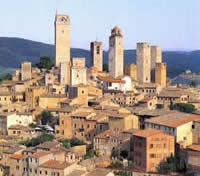
SAN GIMIGNANO
Because of its characteristic medieval architecture and its historical centre it was declared by the UNESCO as a world heritage town. The site of San Gimignano, despite some 19th and 20th century renovations, for the most part has kept intact its 13th-14th century aspect; it is one of the best examples in Europe of urban organisation during the age of the Communes. (wikipedia)
SIENA
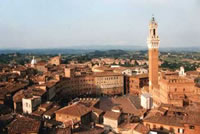
Siena is a city full of atmosphere. The tiny steep flagstone streets converge into the celebrated Piazza del Campo, the shell-shaped square more simply called ‘Il Campo’. Certainly one of the most beautiful squares in Italy, it hosts with extraordinary enthusiasm the ancient event called Palio delle Contrade on July 2nd and on August 16th.
In Town Hall, in the Sala del Mappamondo (Hall of the Globe), you will find the fresco showing the commander of the Sienese army during the capture of Montemassi castle in Maremma.
MONTALCINO
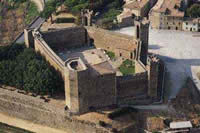
Montalcino overlooks the surrounding countryside and is situated on the top of a hill dominated by the massive 14th century Fortress. Besides craft shops, small cafés or food and wine shops (local wine, honey and cookies are famous worldwide), the Town Hall, the Bishop’s Palace (that hosts different museums), the old crucifix of St. Antimo, the churches of St. Agostino, St. Egidio and St. Francesco (all built between the 13th and 14th centuries) and the sanctuary of the Madonna del Soccorso are also worth a visit.
Home of that Brunello considered the best and the most famous Italian wine.
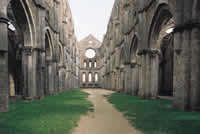
SAN GALGANO
The large Abbey of St. Galgano was built between 1220 and 1268, when in Italy the Romanesque style was merging with the rising French Gothic style.
CASTIGLIONE DELLA PESCAIA
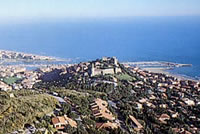
It is considered an exclusive tourist destination because of the quality of the seawater and of the beaches, the environmental care and the facilities. The seaside resort has been awarded with the “5 sails” by Legambiente, acquiring the first position for its environmental and tourist quality in the annual classification of Legambiente and Touring Club. For the same reason, the area around Castiglione della Pescaia is also called “Little Switzerland” or “Maremma’s Switzerland”. The town experienced a period of renaissance and prosperity from the late 18th to the middle 19th century, thanks to the large scale land reclamation and to the prime importance enjoyed by the harbour before the opening of the Maremma Railroad: hence its nickname of little Leghorn at that time.
ELBA ISLAND AND GIGLIO ISLAND
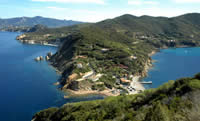
Elba Island, the largest of the Archipelago’s seven sisters, is very rich in surprises for the visitors.
Each day you will be able to choose from many isolated bays, with a wonderful rocky seabed strewn with the intense colours of coral algae, sponges, a rich marine flora that shelters octopi, lobsters and morays. Unmistakable are the scents of the Mediterranean scrub, the land and sea based cuisine and the magnificent white and red wines, including the famous Elba Aleatico.
Giglio Island, located in the Tuscan archipelago facing Monte Argentario, is a true gem waiting to be discovered. Giglio offers wonderful beaches and very clear water to the fans of the sea, as well as a fascinating undersea world to the diving enthusiasts. When the sea is calm, during spring and summer, you can perceive, in the open sea, the passage of sperm whales, rorquals and pods of dolphins.
VETULONIA
Vetulonia was one of Etruria’s principal cities. Located in the valley of the Bruna River and gravitating around the area of Lake Prile, it developed during the Etruscan era thanks to its mines and it expanded its domains on the Colline Metallifere [literally, the “Metal Hills”] as far as Lake Accesa. It seems that originally there were two settlements that merged around the 7th century B.C. The archaeological remains of that era are represented today by objects found in monumental tombs that testify to Vetulonia’s splendour.
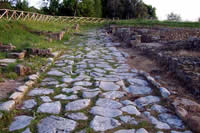
ROSELLE
The Roselle hill, on the Siena – Grosseto motorway, a few kilometres north of Grosseto, contains Tuscany’s most important Etruscan/Roman relics. Roselle’s oldest remains are from the 7th century B.C. Later, in the 6th century B.C., the city grew greatly: the second ring of city walls was built during this period. It encircles both hills and is still largely visible.
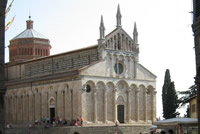
MASSA MARITTIMA
Massa Marittima is a city of art lying amid the “Metal Hills”. It is surrounded by the Maremma countryside and is rich in historic, environmental, and architectural attractions inherited from a prosperous past.
SATURNIA’S HOT SPRINGS
The hot spring facilities (37oC) are very old and are frequented by VIPS.
CALIDARIO VENTURINA
In the midst of a magnificent pinewood which holds within itself the scents of a nature to fully savour. The Calidario is a small lake with a hot spring source recording 36 degrees and gushing directly into the pool-lake. A source that today, more than ever, welcomes visitors, exploiting the beneficial effects of water and steam in the service of wellness. A dip into the past and the times when the Etruscan people enjoyed baths and massages in a place where one can now find harmony and wellbeing.
